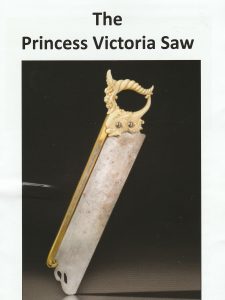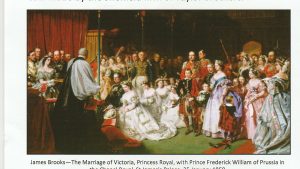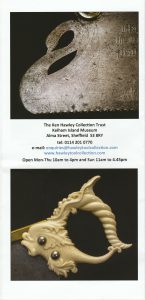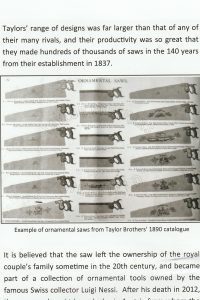Our speaker this week, Simon Barley, is a former GP and Medical School lecturer. Since retirement, he has developed a keen interest in the Economic History of Sheffield and has been much involved with the development of Kelham Island Museum and especially its collection of hand tools. He was to gain a PhD for his researches. As he put it, “I moved from leg sores to hand saws!”. He is author of several books and magazine articles on the subject, with saws at the cutting edge. Simon’s interest in this once overlooked area led to a long standing friendship with Ken Hawley (1927-2014) of Earl Street (off the Moor) tool shop fame. When Ken’s shop finally surrendered to the likes B & Q and his retirement beckoning, Simon was instrumental in cataloguing and moving the bulk of Ken’s tool collection to Kelham Island, where it can be admired today. The inventory amounted to over 100,000 items, many acquired by the boxful for the cost of a few pounds and removal as deindustrialisation hit Sheffield hard from the 1970s onwards. But we were to be absorbed in the story of just one tool, a rather special handsaw.
In Victorian times uninhibited private entrepreneurs would go to great lengths to publicise their products and not only in catalogues or trade magazines. They would participate in the great exhibitions of the era which were blessed by royal patronage. It was with the latter in mind that many firms sought the “by appointment” Royal Warrant. It was at one of these exhibitions in early 1851 that Victoria (Princess Royal 1840-1901) met her future husband, Crown Prince Fredrick III of Prussia (1831-1888). By that time Prussia was by far the dominant German state, occupying two thirds of that country’s territory. Notwithstanding the disapproval of the Kaiser and the Chancellor, Bismarck, the match was seen in London at the time as a good way of ensuring good relations between Great Britain and this ascending power.
The marriage of Fredrick and Victoria in late 1858 was the wedding of the year. Held in the chapel at St James’ Palace, the couple were showered with presents to fill their home at Potsdam, outside Berlin. Apparently European Royalty liked to acquire decorated tools and not least among the gifts was that of a specially made back saw. While the back was brass, the twelve inch blade was made from the finest Sheffield crucible steel. It brought together the supreme skills of the saw maker’s art of shaping, polishing and finishing steel and brass, but also the designer and etcher decoration on the blade. The presentation etched in bas-relief on either side of the Royal arms reads:
“May God’s blessing attend the marriage of His Royal Highness Prince Frederick William of Prussia with Her Royal Highness the Princess Royal of England”
The decoration includes the two national symbols of oak leaves and laurel leaves, and the toe end of the blade is cut out in the form of a swan –a bird that symbolise marital constancy. The handle of carved ivory includes a symbolic cornucopia (horn of plenty) and a dolphin, and is attached to the blade by two nickel-plated screws. The brass back is engraved with the words “Presented by Messrs Taylor Brothers, saw manufacturers, Adelaide works, Sheffield.” The firm was well known for its decorated saws, being the first in Sheffield to employ a firm of engravers and printers (James Bagshaw) to make the increasingly elaborate designs to decorate the blades. Their fee for this masterpiece was 14/6.
It is unlikely that such an unusual gift would influence the thirty-year happy marriage of Frederick and Victoria, which ended in the former’s premature death (of throat cancer) in 1888. The couple were to have seven children, the eldest, Wilhelm, becoming Germany’s last Kaiser. Frederick and Victoria shared a liberal and democratic approach to public affairs and discouraged the country’s increasing militarism which was to do so much to sour relations with Great Britain and others. This atmosphere encouraged Victoria to leave Berlin and build a new home near Frankfurt am Main which she aptly named Friedrichshof Castle in memory of her husband. The castle was eventually to become a luxury hotel, which it remains today.
At the end of World War Two, the Castle was taken over by the American Military. Under the circumstances it is not surprising that easily carried items ‘went missing’. It is thought that a US serviceman going on leave spirited away our unusual saw and sold or pawned it in a Paris flea market. There it remained unloved for some time before being spotted and purchased by a Swiss collector, Luigi Nessi.
After Nessi’s death in 2012, the saw was purchased by a dealer in Austria. Our speaker was instrumental in raising the £13,000 required (by Crowd funding, individual gifts and grants from various charities) to allow the Ken Hawley Collection Trust to secure this much travelled (but never used) treasure. In turn, The Kelham Island Trust is indebted and grateful for being able to bring back to the city of its manufacture one of the most remarkable tools ever made here. It is on display in the Saw Wall in the Gallery- go and have a look!
Follow the link below for more information on Kelham Island Museum:
http://www.simt.co.uk/kelham-island-museum




